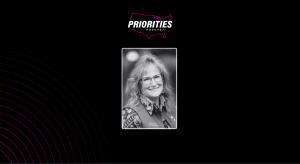How to buy AI for government

Many in government have high hopes for AI tools, but they’ll have to buy them before those hopes can be tested against reality. Despite all of the talk in recent years of governance frameworks, workforce constraints and countless ethical concerns, the nonprofit Open Contracting Partnership last week published a guide aimed at the perhaps less talked-about task of how best to buy AI.
Responding to a survey it conducted last year revealing a large demand for better educational resources and more capacity to procure AI tools in government, OCP interviewed more than 50 procurement experts from around the world and discovered some things that left researchers “pretty surprised,” said Kaye Sklar, a senior program manager at the nonprofit.
Three key trends uncovered, Sklar said, were the dominance of off-the-shelf AI products, such as the chatbots bundled with productivity suites offered by Google or Microsoft, — “the more boring AI is way more popular” — the prominent role of centralized procurement and bulk license purchasing, and the tendency of many AI tools to enter government use without ever having gone through a procurement process.
“It’s often through a partnership with a private-sector company that’s doing it for free or in exchange for work or something or partnerships with academic institutions,” Sklar said. “AI adoption and AI procurement are diverging.”
The report highlights the prudence of “AI readiness,” defined as the ability of governments to the assess risks associated with a given AI technology, define “purpose-specific” use cases for it and then maintain human “oversight, auditability and accountability” throughout its use.
“You have to be AI-ready to have the best out of your AI products,” said Kathrin Frauscher, OCP’s deputy executive director.
Frauscher said the three key trends uncovered by the group’s research each come with upsides — “in terms of being able to move faster, being more cost efficient, maybe having more standards” — but they also bring new risks. The group’s new guide was intended to distill the best practices from around the globe to help government leaders spot those risks and improve their processes for buying AI tools and working with vendors.
In addition to “hacks” for improving AI procurement, like “find your allies” and “aim for shorter contracts,” the guide includes numerous tips and questions tech leaders should ask themselves, like “How will we manage IP and copyright issues relating to AI-generated content?” and “What processes are in place for anonymization or redaction of data before it enters AI systems?”
It links to model contract clauses from around the world, documents from the European Union and Australia.
“Some of the best practices we have seen are from places like Chile, where U.S. governments could also learn from,” Frauscher said.
The guide seeks to dispel numerous myths, like that open source AI is always the best option — (The guide retorts that open source offers “benefits like transparency and customization flexibility, but it’s not automatically better.”) — and that one AI model can be used for everything — (“fine-tuning, prompt engineering, and guardrails are critical to make them useful and safe in specific contexts. Different models may be optimal for different use cases and considerations.”)
Even with so much to consider, Sklar said she thinks there are some clear takeaways about what works to improve AI procurement. One is that agencies should start with “strong vision and alignment” on governance and “a coherent strategy.” Having a dedicated official to lead that work “is really going to make a big difference,” she said, pointing to Texas, which appointed a chief AI officer last month. Georgia, Montana and Vermont are among the small cohort to have AI chiefs, too, though some states have innovation officers, which arguably serve the same purpose.
Asked why AI tools included in productivity suites are so much more popular than custom tools, Sklar noted that governments have so far been “fairly cautious.” They may just be testing the tools they already have, before spending on anything too speculative, a gambit that can raised unwanted attention. Colorado Chief Information Officer David Edinger said recently that his strategy of developing dozens of pilot projects and only keeping the best 5% had raised eyebrows in Denver. Taxpayers don’t want to hear about “failed” projects, he said.
When pressed on specific numbers associated with AI gains, numerous state technology chiefs and agency IT directors have provided this publication with only modest figures, small improvements they said they were happy with. But even Maryland, whose governor has claimed to have saved state workers an average of eight hours per week through the introduction of ChatGPT, doesn’t quite embody the White House promise that the technology will usher in an “industrial revolution, an information revolution, and a renaissance.”
If there are big productivity gains to be found in government, custom AI tools, designed not for everyday productivity, but specific tasks, could be the best bet. Joe Scheidler, cofounder and chief executive of Helios, an AI-powered platform for tracking policy changes in government, said he thinks those larger gains will start to be realized in government over the next 2-5 years.
“I view it as a tool that will eventually create a more efficeint and effective government at every level,” Scheidler said of AI.
But general purpose tools integrated with word processors and spreadsheets aren’t always noticed or if they are, workers who haven’t been trained won’t know how to use them well, said Scheidler, who worked in state government and as an adviser for the State Department and the White House. The “monumental” changes, he said, will come from products like his, turning just a few hours saved into 20.
But before any big AI wins, OCP’s Sklar said, agencies need to “build in-house capacity” to understand the AI marketplace and then buy smartly.
“I think AI presents a lot of opportunities and to make the most of those opportunities governments are going to have to build that capacity to do that purchasing,” she said.






